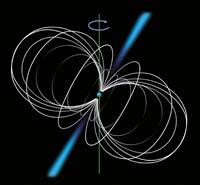Astrophysicists detect pulses that appear to exceed the speed of light

Astrophysicists at the University of Texas have detected in space a superluminal velocity (higher than that of light). It is a phenomenon related to anomalous dispersion that, although it has been seen in other areas, is the first time seen in nature.
Precisely, astrophysicists were tracking a pulse that is more than 10,000 light years away. The pulsars are neutron stars that spin very fast and emit electromagnetic waves that are repeated at very short and regular intervals. As they traverse space, pulses are changing and, on the basis of this, astrophysicists can better know the cosmos. Now from the Arecibo Observatory (Puerto Rico) they have seen that the group speed of the pulses of this pulsar is higher than the speed of light due to anomalous dispersion.
According to astrophysicist Jesús Arrangi, despite the importance of the discovery, "it is not of extreme importance." In fact, through these pulses, information could not be transmitted, so the phenomenon does not question the theory of relativity --the theory says that information cannot be transmitted faster than light -. Nevertheless, Arrangi considers that the research is interesting since it opens the way to study the interstellar environment.





